SystemVerilog
-
-
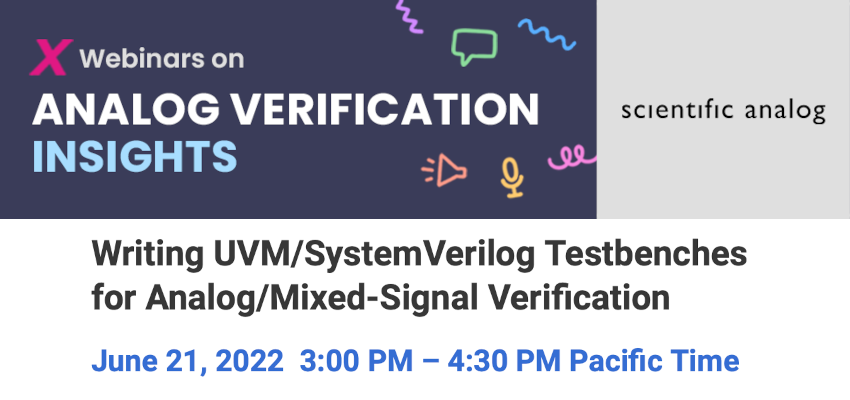
Writing UVM/SystemVerilog Testbenches for Analog/Mixed-Signal Verification
Learn how to write UVM testbenches for analog/mixed-signal circuits. UVM (Universal Verification Methodology) is a framework of standardized SystemVerilog classes to build reusable and scalable testbenches for digital designs, and it can be extended to verifying analog circuits simply by using a fixture module that generates analog stimuli and measures analog responses with Scientific Analog's… Writing UVM/SystemVerilog Testbenches for Analog/Mixed-Signal Verification
-
-

Sigasi September Productivity Hacks Workshop
Sigasi Studio serves as a code browser for VHDL, Verilog and SystemVerilog. You can navigate through your project to understand large and complex legacy designs. Visuals of your code update instantly and are cross-linked to your code to allow graphical browsing. Sigasi Studio guides you through complex code designs. The instant feedback on errors and… Sigasi September Productivity Hacks Workshop
-

Sigasi September Productivity Hacks Workshop
Sigasi Studio serves as a code browser for VHDL, Verilog and SystemVerilog. You can navigate through your project to understand large and complex legacy designs. Visuals of your code update instantly and are cross-linked to your code to allow graphical browsing. Sigasi Studio guides you through complex code designs. The instant feedback on errors and… Sigasi September Productivity Hacks Workshop
-
-
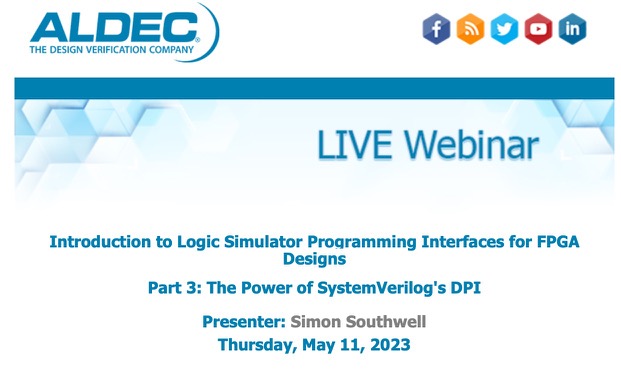
The Power of SystemVerilog’s DPI
The programming interfaces of logic simulators are largely the domain of specialists writing proprietary tools and extensions and are only vaguely in the consciousness of many design and verification engineers, if aware at all. Yet the simplest use of such interfaces opens up a whole world of possibilities in extending what is achievable in verifying… The Power of SystemVerilog’s DPI
-
-
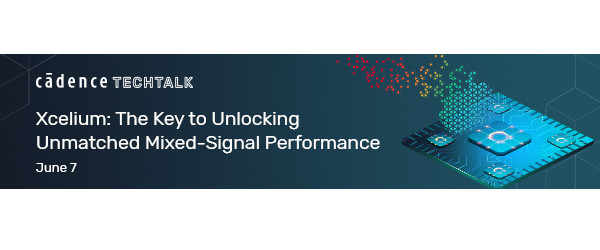
Xcelium: The Key to Unlocking Unmatched Mixed-Signal Performance
Xcelium mixed-signal simulation enables teams to achieve digital simulation speeds of analog models and opens mixed-signal designs to advanced verification techniques typically applied within standard verification flows. Built on a SystemVerilog Real Number Modeling (RNM) foundation, Xcelium automates the signal integration of digital and RNM code to achieve digital simulation speeds for mixed-signal designs. This… Xcelium: The Key to Unlocking Unmatched Mixed-Signal Performance
-

Verification Futures 2023 UK
University of Reading Whiteknights Campus Park House, Reading, United KingdomThe Verification Futures conference provides a unique blend of conference presentations, exhibitions, training and industry networking sessions dedicated to discussing the challenges faced in hardware and software verification. Verification Futures provides a unique opportunity for end-users to define their current and future verification challenges and collaborate with the vendors to create solutions. It also provides… Verification Futures 2023 UK
-
-
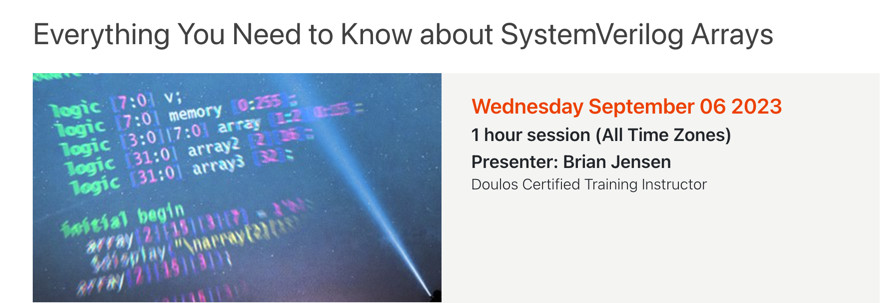
Everything You Need to Know about SystemVerilog Arrays
This webinar gives a comprehensive guide to all aspects of SystemVerilog arrays: ordinary static arrays, dynamic arrays, queues and associative arrays. It also includes array methods and practical examples. Topics: Review of Verilog array types SystemVerilog packed and unpacked arrays SystemVerilog dynamic arrays SystemVerilog queues SystemVerilog associate arrays Array manipulation methods. Coding examples are shown… Everything You Need to Know about SystemVerilog Arrays
-
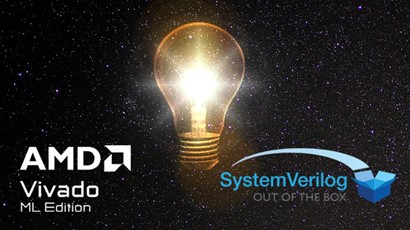
Maximize Design Productivity using Vivado ML with SystemVerilog
Although SystemVerilog is perhaps most widely used in the context of hardware verification, it also contains many features directly relevant to FPGA hardware designers. We explore the features of SystemVerilog that are useful for RTL synthesis using Vivado™ ML Editions from AMD, showing how the RTL SystemVerilog language constructs have been optimized for productivity and reliability.… Maximize Design Productivity using Vivado ML with SystemVerilog
-
-

Enhance Verification Quality with the Xcelium Mixed-Signal App
The comprehensive verification of analog mixed-signal (AMS) designs has challenges in schedules and implementations due to the vast divergence in design flows of the analog and digital portions of the SoC. These discrepancies include priorities in simulation cycles (accuracy versus performance), design methodologies, and verification of functionality. Over multiple decades, design verification (DV) has evolved… Enhance Verification Quality with the Xcelium Mixed-Signal App
-
-
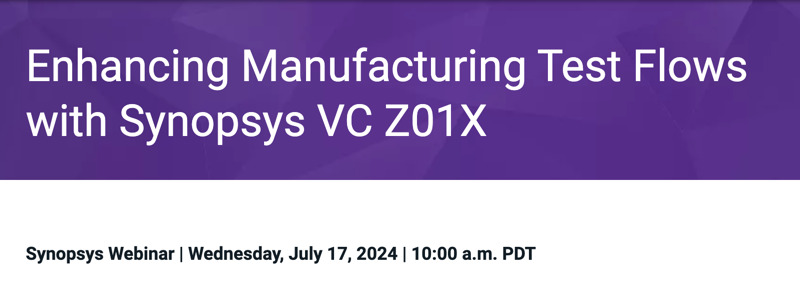
Enhancing Manufacturing Test Flows with Synopsys VC Z01X
Leveraging functional patterns is crucial for achieving high defect coverage and reducing defective parts per million (DPPM) levels. Synopsys VC Z01X fault simulator offers enhanced fault coverage in manufacturing test flows, complementing ATPG tools like Synopsys TestMAX ATPG. In this presentation we will delve into unique coverage scenarios, such as resets and clocks blocked during ATPG mode. We'll… Enhancing Manufacturing Test Flows with Synopsys VC Z01X
-
-

The Development and Evolution of Verilog & SystemVerilog
Abstract: SystemVerilog is a super next-generation Verilog with a fancy marketing name. SystemVerilog leveraged many of its features from other languages and methodologies. Class-based capabilities, constrained random testing (CRT), and functional coverage were all features that were added to SystemVerilog and incorporated into the Universal Verification Methodology (UVM). UVM has become the most dominant and… The Development and Evolution of Verilog & SystemVerilog
-
-

Rise Together Beyond RTL : Practical Techniques for Improving ASIC Design Efficiency and Early Verification
High-level design techniques and automation tools to address the limitations of traditional RTL, reduce verification times, improve performance, and manage growing design complexity—integrating seamlessly. What You'll Learn: This Lunch & Learn offers an in-depth look at Rise Design Automation tools and illustrates how high-level design and early verification techniques can bring value to your projects.… Rise Together Beyond RTL : Practical Techniques for Improving ASIC Design Efficiency and Early Verification